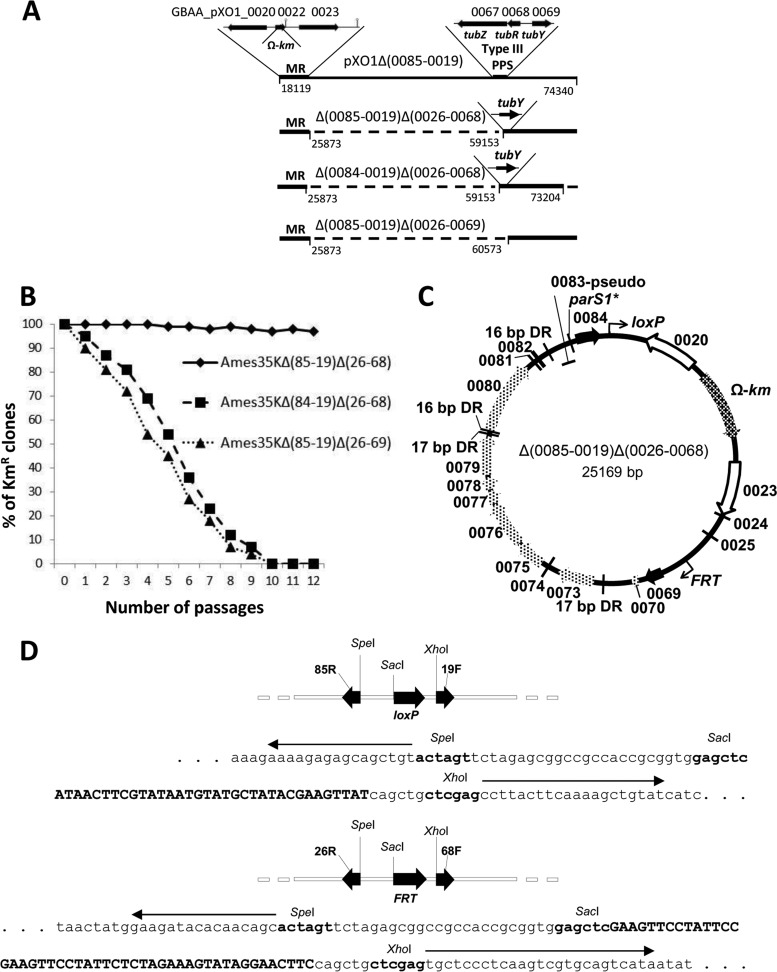FIG 2.
Deletions created with Cre and Flp identify ORFs 69 and 84 as being important for plasmid stability. (A) Deletions produced by the Flp-FRT system within pXO1Δ(85–19) resulted in pXO1Δ(85–19) Δ(26–68), which retained plasmid stability. Deletion of either GBAA_pXO1_0084 or GBAA_pXO1_0069 decreased stability of pXO1Δ(85–19) Δ(26–68), which we redesignate circular Δ(0085–0019) Δ(0026–0068) (see panel C). (B) Percentages of kanamycin-resistant (i.e., plasmid-containing) bacteria in cultures of B. anthracis Ames 35 containing either Δ(0085–0019) Δ(0026–0068) plasmid or the plasmids with single flanking genes deleted were determined as described in Materials and Methods. (C) Genetic map of the mini-pXO1 plasmid Δ(0085–0019) Δ(0026–0068). ORFs of the pXO1 minireplicon (MR) are indicated with unfilled arrows, ORFs important for maintenance are indicated with black arrows, and additional predicted ORFs are indicated with light patterned arrows. The Ω-km cassette is located within the minireplicon and is indicated with a dark patterned arrow. The 16- and 17-bp direct repeats are labeled as DRs. The loxP and FRT sites generated during the deletion events are indicated as bent arrows. The putative centromere parS1* located between the GBAA_pXO1_0083 pseudogene and the GBAA_pXO1_0084 gene is indicated as an arc. (D) Graphic representation of the deletion junction sites for the Δ(0085–0019) Δ(0026–0068) plasmid. The loxP site is shown in the upper portion along with the sequence indicating the loxP site within the Δ(0085–0019) Δ(0026–0068) junction site. Arrows indicate 85R and 19F primers; endonuclease restriction sites are shown in bold, and loxP is shown in bold uppercase. The FRT site is shown in the bottom portion along with the sequence indicating the FRT site within the Δ(0085–0019) Δ(0026–0068) junction site. Arrows indicate 26R and 68F primers; endonuclease restriction sites are shown in bold, and FRT is shown in bold uppercase.

